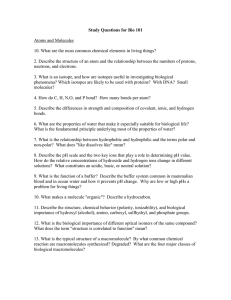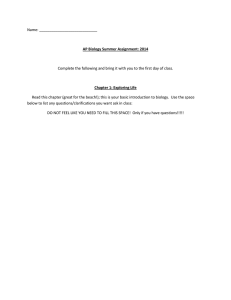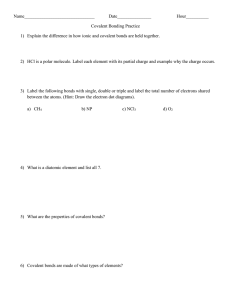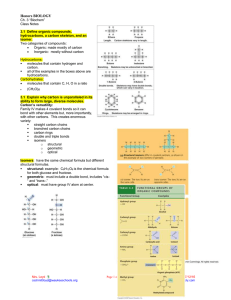AP BIOLOGY UNIT 1: Chemistry of Life Chapter 1: Exploring Life 1
advertisement
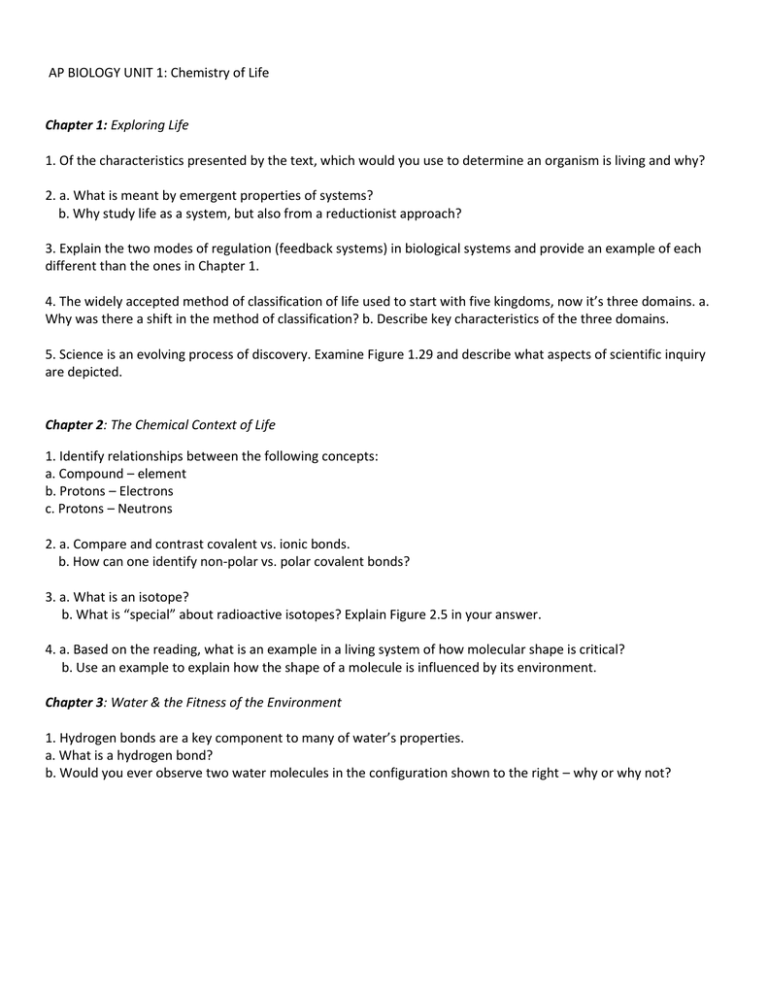
AP BIOLOGY UNIT 1: Chemistry of Life Chapter 1: Exploring Life 1. Of the characteristics presented by the text, which would you use to determine an organism is living and why? 2. a. What is meant by emergent properties of systems? b. Why study life as a system, but also from a reductionist approach? 3. Explain the two modes of regulation (feedback systems) in biological systems and provide an example of each different than the ones in Chapter 1. 4. The widely accepted method of classification of life used to start with five kingdoms, now it’s three domains. a. Why was there a shift in the method of classification? b. Describe key characteristics of the three domains. 5. Science is an evolving process of discovery. Examine Figure 1.29 and describe what aspects of scientific inquiry are depicted. Chapter 2: The Chemical Context of Life 1. Identify relationships between the following concepts: a. Compound – element b. Protons – Electrons c. Protons – Neutrons 2. a. Compare and contrast covalent vs. ionic bonds. b. How can one identify non-polar vs. polar covalent bonds? 3. a. What is an isotope? b. What is “special” about radioactive isotopes? Explain Figure 2.5 in your answer. 4. a. Based on the reading, what is an example in a living system of how molecular shape is critical? b. Use an example to explain how the shape of a molecule is influenced by its environment. Chapter 3: Water & the Fitness of the Environment 1. Hydrogen bonds are a key component to many of water’s properties. a. What is a hydrogen bond? b. Would you ever observe two water molecules in the configuration shown to the right – why or why not? 2. Label the diagram below to demonstrate the dissociation of the water molecules and then relate this diagram to pH. 3. Why would an “apparently” small changes in pH (say 3 to 4) have such a drastic impact on a biological system? 4. a. What is a buffer? b. Explain how a buffer works using the carbonic acid buffer system in human blood. Chapter 4: Carbon & the Molecular Diversity of Life 1. Describe Figure 4.7 Provide an example of each type that is different from the one in the figure. 2. Why are enantiomers of biological interest? 3. Create a table of the 6 main functional groups: for each – draw the structure, name the group, write the formula, give an example (different from the book), note at least one functional property & create an easy way for you to remember each! Chapter 5: The Structure & Function of Macromolecules 1. a. Describe the processes shown in Figure 5.2 b. Examine Figure 5.5 - What is a glycosidic linkage and what do the numbers 1-4 and 1-2 relate to? How is this figure related to Figure 5.2? 2. Create a table for the four macromolecules: describe basic structures of each, note major functional groups of each, examples of functions in biological systems, and key biological monomer and/or polymers of each if applicable. 3. Explain the four levels of protein structure. 4. a. How does the characteristics of an amino acid – nonpolar, polar, acidic or basic relate to the issue of tertiary and quaternary structure? b. What does denaturation mean and why is it important?
